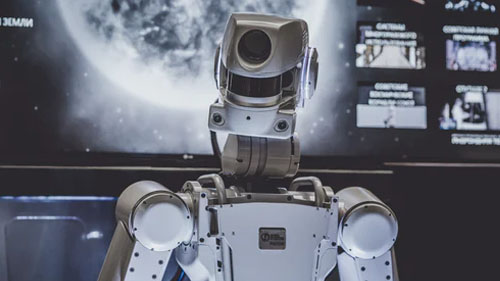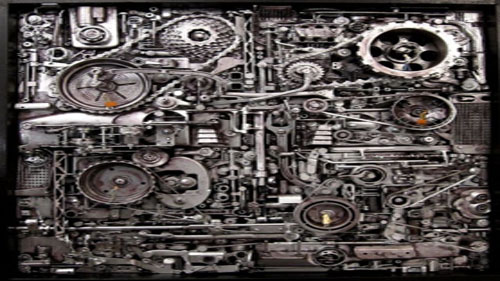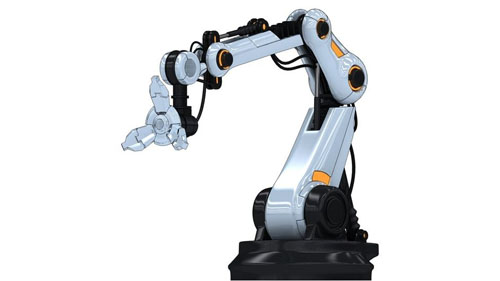
Source: Unsplash
Numerous talents are working tirelessly to advance the world of technology. The use of sophisticated equipment, machinery, resources, procedures, and energy sources to complete a task and our daily lives is termed development. Life was not as simple a hundred years ago as it appears to be today. New technologies such as the internet and mobile phones have had a significant impact.
Many people who want to optimize their production game through automation find themselves stuck in choosing between a machine and a robot. It is critical to discern how both devices work to make a knowledgeable conclusion about the best option for a manufacturing process. These are the key pointers to help you distinguish the difference between a Robot and a machine.
What is a machine?

Source: Pinterest
A machine is a device that people created to make work easier. It is essentially built to multiple the human efforts in a job or work. Most machines work with pre-installed instructions or designs to fulfill the set tasks.
Majority of companies in the industry use machines in their production processes to reduce the human workload and maximize the output per hour of their plants.
Machines do not necessarily have heavy equipment. On the contrary, there are many kinds of machines an average person can carry. The essence of machines is to maximize production, and as said earlier, reduce the human workload to the minimum. This helps with the final sales of the products.
Categorically, machines are subdivided into different types depending on the functions they perform and the workload they can handle. Heavy machinery is most preferably used in large plants and constructions, while simple machines can be used in everyday life activities and tasks.
Characteristics of a machine
A machine is run by engines or a power source to keep it running to carry out production and processing capabilities.
Some machines have movable parts such as bicycles, while others are designed for rigidity productions such as those used in processing plants.
A machine may be run by a person or run independently, depending on the intended purpose of that particular machine.
A machine can perform automated functions.
Machines are designed to meet production standards that humans cannot meet in a short time frame, thus High-performance output.
What is a robot?

Source: Pinterest
A robot is a self-contained mechanism capable of perceiving its surroundings, conducting calculations to make judgments, and acting in the real world.
Robots come in all shapes and sizes. Some of them walk about on two, four, six, or more legs, while others can fly. Some robots assist surgeons during surgery inside the human body, others toil in filthy industries, while Some are CNC machine tending. Now factory robot arms are widely used for their different reach and payload which can cater to the needs of any type of business.
Characteristics of a Robot?
Sensing: First and foremost, a robot must be able to perceive its environment. It does so in a manner somewhat dissimilar to how you see your environment. Sensors such as light sensors, touch and pressure sensors, chemical sensors, hearing and sonar sensors, and taste sensors will help the robot be more apprehensive of its surroundings.
Intelligence: Some type of “intellect” is required of a robot. This is where programming comes into play. The individual who provides the robot its ‘smarts’ is known as a programmer. The robot will need to receive the software to understand what it is supposed to accomplish. This is easily done through robotic process automation.
Energy: A robot must be self-sufficient in terms of energy. Solar, electrical, or battery power might all be used to power a robot. Every robot’s energy source is determined by the tasks it performs.
Robot Versus Machine

Source: Pinterest
Similarities
They both can perform tasks unmanned for a certain time
They can be automated using external controllers to allow them to run with the least human supervision
Differences
In most cases, machines require constant human supervision to ensure that it runs it’s operations well. Others are made in that they can only be operated to perform their tasks. On the other hand, robots are automated(through programmable instructions), making the need for human supervision unnecessary unless fixing some bugs in the programmed instructions.
Robots are programmed with scenarios in mind to make decisions and perform as long as the presented scenario is part of those programmed in its system.
The Bottom Line
Robots have turned out to be among the most intelligent investments in all humanity. Being able to maximize production through automation, many industries that used robots continue to do so. If you are looking to invest in automation in your production, EVS is the company you should work with. They are the leading manufacturer and arms suppliers in the market.
Many companies choose EVS as the partner for their robots’ versatility. Not only can robotic welding companies use EVS’ welding robots for robotic aluminum welding but also for completing all types of linear, curve, and complex welding processes. Good luck!

 Arabic
Arabic Bulgarian
Bulgarian Czech
Czech Dutch
Dutch English
English Finnish
Finnish French
French Georgian
Georgian German
German Greek
Greek Hungarian
Hungarian Italian
Italian Japanese
Japanese Korean
Korean Lithuanian
Lithuanian Myanmar (Burmese)
Myanmar (Burmese) Persian
Persian Polish
Polish Portuguese
Portuguese Romanian
Romanian Russian
Russian Serbian
Serbian Slovak
Slovak Spanish
Spanish Swedish
Swedish Thai
Thai Turkish
Turkish Ukrainian
Ukrainian Vietnamese
Vietnamese